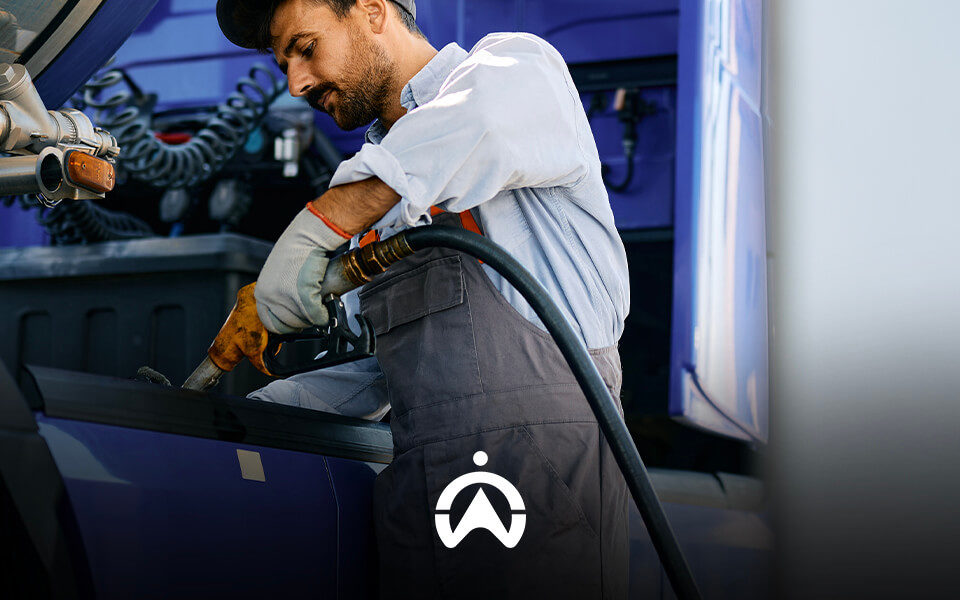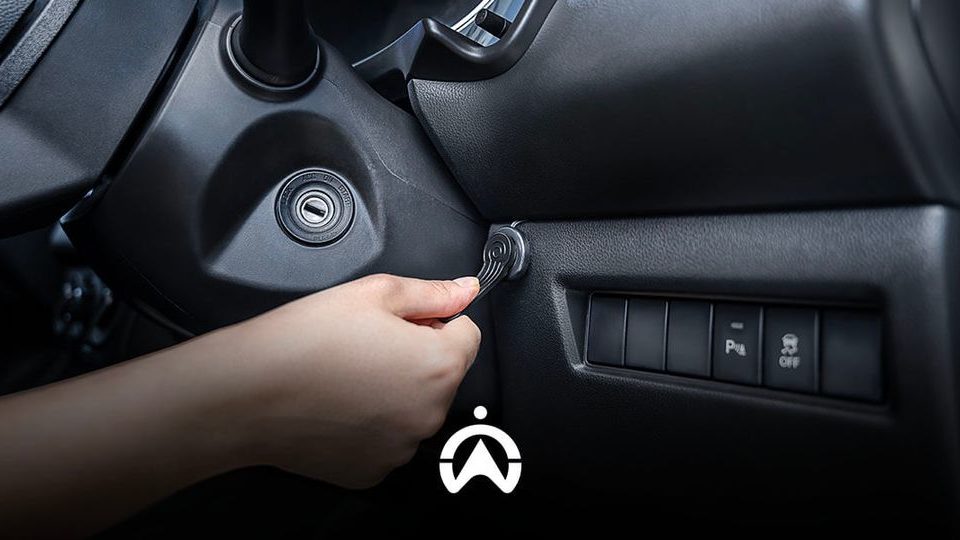7 Things Every CEO Should Know About Their Fleet
Picture this – a seamless operation where costs are optimised, drivers are well-trained, and technology seamlessly integrates with your fleet’s every move. This isn’t just a picture, it’s reality, and it can be your reality.
Explore the art of fleet management and how it will revolutionise your approach to fleet management forever, all in this blog.
Let’s dive straight in.
CEO’s guide to fleet management
To ensure that a company, along with its fleet tracking, is operating efficiently, CEOs have a huge responsibility to fully understand the ins and outs of fleet management.
Fleet management is like the behind-the-scenes coordination tool for your fleet. To fully oversee your drivers, vehicles and equipment, you have to understand all the different aspects of fleet management, such as:
- Vehicle acquisition
- Asset maintenance
- Driver management
- Safety protocols
- Performance metrics
These are some of the main building blocks to help you improve the way you run your fleet business and ensure your fleet always operates at optimal levels.

How to get started with fleet management
After delving into the crucial aspects of your fleet and understanding how fleet management can change your fleet for the better, the next step is implementation.
- Assess your needs:
Begin by comprehensively understanding the unique requirements of your fleet. Identify its size, type, and the specific tasks you need to manage effectively.
- Choose the right solution:
With your fleet’s needs in mind, select a fleet management solutiontailored to your business objectives. Choose from various options available and opt for one that seamlessly aligns with your business’s requirements and long-term plans.
- Implement your solution:
After choosing your preferred fleet management solution, it’s time to put your plans into action. This may involve training your staff and making the necessary adjustments to your existing business processes.
- Monitor and improve: Once your fleet management software is in operation, allow the system to run for a period, closely observing your fleet and team operations. This allows you to identify any potential issues or areas for improvement, ensuring that everything runs optimally and seamlessly aligns with your evolving needs.
The 7 key elements CEOs should know about their fleet
The fleet management responsibilities we touched on above might seem overwhelming at first, but using a fleet management system that best suits your business will help easily navigate the complexities of managing your fleet successfully.
To put this process into practice, here are 7 things every CEO or fleet manager should focus on when it comes to running their fleet:
- Effective cost management
Get familiar with managing every penny spent within your fleet. This will provide insights into potential areas where costs are higher than they should be and give you a chance to craft strategies that cut costs without compromising on quality or safety.
Fuel costs:
Implementing a thoughtful fuel management strategy can provide positive change to how you manage fleet fuel costs. Keep a close eye on consumption patterns, optimise routes, and encourage fuel-efficient driving practices through training.Maintenance expenses:
Develop a preventive maintenance program, negotiate contracts with suppliers for competitive prices, and schedule regular maintenance tasks with qualified technicians.
- Strategic vehicle lifecycle management
Get the most out of your fleet by understanding its lifecycle. From acquiring the right vehicles for your business operations to knowing when it is the perfect time to sell or upgrade your vehicles.
Vehicle acquisition: Choose vehicles that align with your business needs, considering factors like fuel efficiency, reliability, and overall running costs.Vehicle utilisation:
Optimise fleet efficiency by outsourcing tasks, using vehicles for multiple purposes, and employing telematics systems to keep track of usage.Vehicle maintenance:
Stick to manufacturer recommendations, plan preventive maintenance, and use qualified technicians to keep your vehicles on the road.Vehicle disposal:
Develop a solid plan for vehicle disposal, whether maximising resale value or opting for environmentally friendly methods like donation or recycling.
- Integration of technology
Embrace the tech wave with fleet systems meant to automate and simplify your fleet processes. They’re not just fancy gadgets; they’re tools to boost efficiency, keep your drivers and vehicles safe, and streamline routes.
Telematics systems:
They can collect valuable data on location, speed, fuel consumption, and more, helping enhance fleet performance, reduce costs, and improve safety.
Fleet management systems: Gain a holistic view of your fleet’s operation, track vehicle usage, manage maintenance schedules, optimise routes, and generate insightful reports.
- Compliance and regulatory awareness
Stay compliant with regulations to avoid fines and legal complications. Missing out on compliance can lead to fines and legal headaches, which can be extremely costly for your business and even dent your business’s reputation.
Regulatory requirements:
Stay on the right side of the law by familiarising yourself with vehicle safety standards, driver licensing requirements, and environmental regulations. Develop policies and procedures to ensure compliance.Compliance standards:
Adopting industry best practices help keep your operations safe and sound.
- Prioritising driver safety and training
Safety first! To ensure driver safety, set up training programs and protocols to reduce accidents and create an all-around safe environment. With heightened safety protocols within your fleet, you can expect fuel efficiency to improve, vehicle longevity to extend, compliance to strengthen and insurance costs to lower, saving you money in the long run.
Driver training:
Equip your drivers with the skills they need for safe driving. Develop and implement driver training programs that cover topics like safe driving practices, best vehicle operation techniques, and emergency procedures.Safety protocols:
Implement safety protocols, including vehicle inspections, maintenance procedures, and accident reporting. Cultivate a safety-oriented culture within your organisation by emphasising its importance to all employees.
- Environmental sustainability
Go green. From choosing the right vehicles toadopting sustainable driving practices, it’s not just good for the environment – it’s good for business too.
Eco-friendly vehicles:
Make conscious choices, such as opting for the right hybrid or electric vehicle, to reduce fuel consumption and emissions.Sustainable practices:
Incorporate sustainable practices, such as educating your drivers on sustainable driving practices. Reducing risky driving behaviour not only increases safety within your fleet but also reduces unnecessary fuel consumption.
- Data analytics for informed decision-making
Invest in data analytics. From fuel use patterns to maintenance records, it’s your secret weapon for smart decision-making.
Types of data:
Gather insights on fuel consumption, vehicle usage, maintenance costs, and driver behaviour. Utilise telematics and fleet management systems to collect this fleet data automatically.Using data for decision-making:
Let this data guide your decisions. Identify cost-saving opportunities, improve fleet performance, and enhance safety. For example, you can use data to identify vehicles that are not being utilised efficiently or drivers who are performing unsafe driving habits.
Armed with a grasp of these key aspects, CEOs can confidently navigate the intricate landscape of fleet management. Understanding these critical elements is the key to steering your fleet towards success.

Bonus tip: Why CEOs Choose Cartrack Nigeria
If you’re a CEO looking to streamline and optimise your fleet operations, then consider integrating a comprehensive fleet management solution like Cartrack’s into your fleet strategy.
Cartrack Nigeria goes beyond a mere tool. Our advanced system offers a multitude of top-quality features that will help take complete control of your entire fleet and equip you with all the tools you need to run your business successfully and efficiently.
Here are a few ways our industry-leading software can assist you:
- LiveVision – Driver & vehicle video monitoring software
Boost driver and vehicle safety with our AI-powered camera solution. These cameras monitor drivers and audibly alert them in real time when distracted driving behaviour is detected, helping drivers immediately correct their actions and prevent an accident. You also gain access to recorded video footage of these events, so you can help train and make drivers more accountable to further increase fleet safety.
- MiFleet – Fleet cost monitoring and management system
MiFleet is a fleet cost management system that provides you with detailed information about all your fleet’s running costs, like speeding fines, toll fees, licence renewals, maintenance, and fuel costs. MiFleet can also automatically review all your fuel transactions, match them to your vehicle’s data and highlight any areas of possible fuel theft so you can investigate these and prevent fuel cost wastage.
- ID Tags – Driver authorisation monitoring solution
Secure, monitor and control driver-vehicle usage with our Driver ID Tags. Equip each driver with a unique tag which requires them to tap on a sensor within the vehicle in order to operate it. This helps you ensure that only authorised drivers use the correct vehicles, increasing the visibility and safety of your fleet.
- Geofence – Vehicle boundary monitoring feature
Make sure your vehicles don’t travel where they shouldn’t with our geofencing feature. You can see virtual boundaries around any area your vehicles operate in or even no-go zones and receive immediate notifications via SMS or email the moment your drivers enter or exit these areas, so you can accurately track your vehicle activity.
- Delivery – Driver and job optimising tool Take any delivery job from do to done fast with Cartrack’s Delivery tool. It automates your processes, giving you full visibility of task progress and allows you to easily allocate jobs to your drivers and optimise them based on the quickest route or by job priority for faster deliveries.
Partner with the fleet management experts
With Cartrack Nigeria as your fleet management partner, business owners, CEOs, and fleet managers alike can confidently navigate any challenges their fleet might face.
Integrating Cartrack Nigeria into your fleet management strategy is a proactive step towards a more efficient, safer, and cost-effective operation.
Contact Cartrack Nigeria to get started.




